Imagine standing in your garden, surrounded by vibrant greenery, the air filled with the earthy scent of fresh produce. You can feel the warmth of the sun on your skin, illuminating the hard work you’ve put into creating a thriving ecosystem. This is where tomatillo companion plants come into play. By carefully selecting tomatillo garden companions, you can enhance the growth and resilience of your tomatillos, transforming your garden into a harmonious space. This companion planting guide will help you navigate the beautiful world of plant relationships, ensuring that your tomatillos flourish while you enjoy the fruits of your labor in every season.
Key Takeaways
- Understanding the significance of tomatillo companion plants can elevate your gardening experience.
- Choosing the right tomatillo garden companions enhances growth, health, and productivity.
- Companion planting can create a more sustainable gardening ecosystem.
- Exploration of beneficial and detrimental companion plant pairings is essential for success.
- Engaging with your garden through companion planting can lead to a more fulfilling gardening journey.
What Are Tomatillo Companion Plants?
Tomatillo companion plants are those that, when grown together, create a beneficial relationship, enhancing growth and productivity. Understanding plant companionship helps you cultivate a thriving garden. Employing the tomatillo companion planting guide allows you to identify which plants can improve pollination, deter pests, and maximize nutrient absorption.
Understanding Plant Companionship
Companion planting involves the strategic placement of certain plants to promote health and growth. This practice acknowledges that some plants can create favorable conditions for others, fostering an environment where both can thrive. By considering the best plants to grow with tomatillos, you can enhance the overall health of your garden.
Benefits of Companion Planting
Engaging in companion planting offers numerous advantages. These benefits include:
- Enhanced plant health: Companion plants can support one another, leading to improved resilience against diseases.
- Reduced pest issues: Specific plants can naturally repel unwanted pests, lowering the need for chemical interventions.
- Increased yields: Striking the right companion plant balance often results in more bountiful harvests.
Utilizing a tomatillo companion planting guide can help you maximize these benefits while ensuring a flourishing garden.
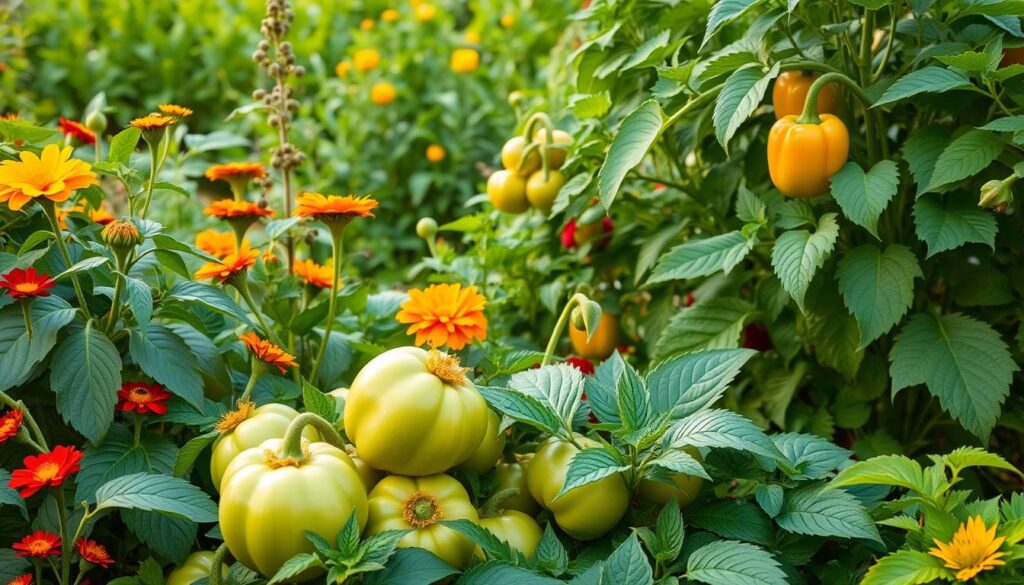
Best Companion Plants for Tomatillos
When planning your garden, choosing the right tomatillo plant pairings can significantly impact growth and health. Some plants complement tomatillos exceptionally well, enhancing your overall yield and culinary options. Here are three of the best tomatillo vegetable garden companions to consider for your garden.
Coriander
Coriander, also known as cilantro, plays a dual role in the garden. It attracts beneficial insects, such as pollinators, which support fruit set in your tomatillos. Additionally, the fresh flavor of coriander enriches salsa and various dishes, making it advantageous in both the garden and kitchen.
Basil
Basil is another excellent companion for tomatillos. This aromatic herb not only enhances the flavor of tomatillos but also helps repel pests like aphids and spider mites. Space basil plants nearby to enjoy its pest-repellent properties while adding a fresh taste to your summer dishes.
Beans
Beans are valuable tomatillo vegetable garden companions due to their ability to fix nitrogen in the soil, improving soil health over time. Additionally, their lush greenery covers the ground, providing shade that can help suppress weed growth. Incorporating beans will contribute positively to your tomatillo plant pairings.
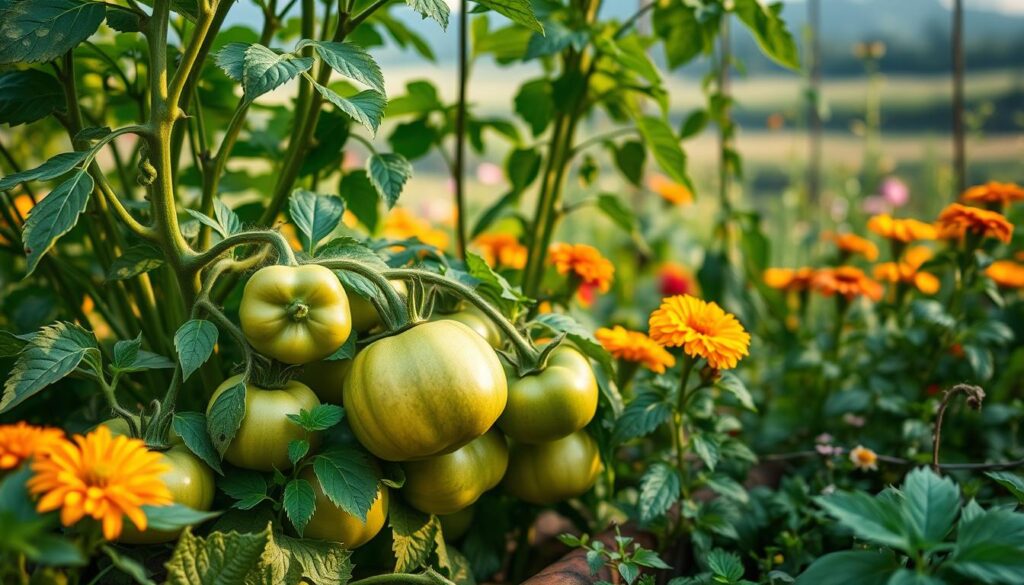
Plants to Avoid Near Tomatillos
While considering your tomatillo planting companions, it’s equally important to be aware of the plants to avoid near tomatillos. Certain vegetables can disrupt growth and lead to disease susceptibility. Keeping these plant interactions in mind fosters a healthier garden environment.
Potatoes
Potatoes are known to increase the risk of blight when planted near tomatillos. This connection can lead to poor outcomes for your tomatillo plants. Avoiding this proximity helps maintain a safer growing condition.
Eggplants
Eggplants compete fiercely for essential nutrients, particularly nitrogen. This competition can stunt the growth of tomatillos. By steering clear of planting these together, you ensure that your tomatillos receive the nutrition they need to thrive.
Peppers
Some pepper varieties may cross-pollinate with tomatillos, resulting in unexpected changes in flavor profiles. Keeping these plants at a distance allows for a more predictable taste in your harvest, maintaining the unique qualities of your tomatillos.

How Companion Plants Enhance Tomatillo Growth
Understanding how tomatillo companion plants can positively affect your garden is essential for maximizing growth and yield. These companion plants not only help in nutrient sharing but also play a vital role in pest control for tomatillos, creating a thriving ecosystem in your garden.
Nutrient Sharing
Nutrient sharing among plants provides a symbiotic relationship beneficial for tomatillos. For instance, legumes such as beans can increase nitrogen levels in the soil, which tomatillos thrive on. By planting these together, you enrich the soil and enhance the nutritional availability, promoting healthier and more robust plants.
Pest Control
Effective pest control for tomatillos can be achieved by including certain companion plants. Plants like basil and marigolds not only enhance the garden’s aesthetics but can also deter harmful pests. By repelling insects such as aphids, these companions help maintain a healthier environment for your tomatillos, reducing reliance on chemical pesticides.

Spacing and Layout for Companion Planting
Effective spacing and a well-thought-out layout are vital for optimizing your tomatillo growing layout. Proper arrangements help in maximizing sun exposure, ensuring adequate air circulation, and promoting overall plant health. By focusing on these aspects, you can foster a thriving garden environment for your tomatillos and their companions.
Optimal Planting Distance
The optimal distance for tomatillos is typically around 3 feet apart. This spacing allows each plant enough room to grow without overcrowding, which can lead to poor air circulation and increased pest issues. Maintaining this distance facilitates the growth of other companion plants, ensuring they receive adequate light and nutrients without competing too aggressively for space.
Layout Suggestions
When planning your garden layout, consider grouping plants with similar light and water requirements. For an effective tomatillo growing layout, you might incorporate taller plants, such as corn, to provide natural support for the tomatillos. This strategy not only saves space but promotes healthy growth as smaller plants benefit from the shade and structure offered by their taller counterparts.
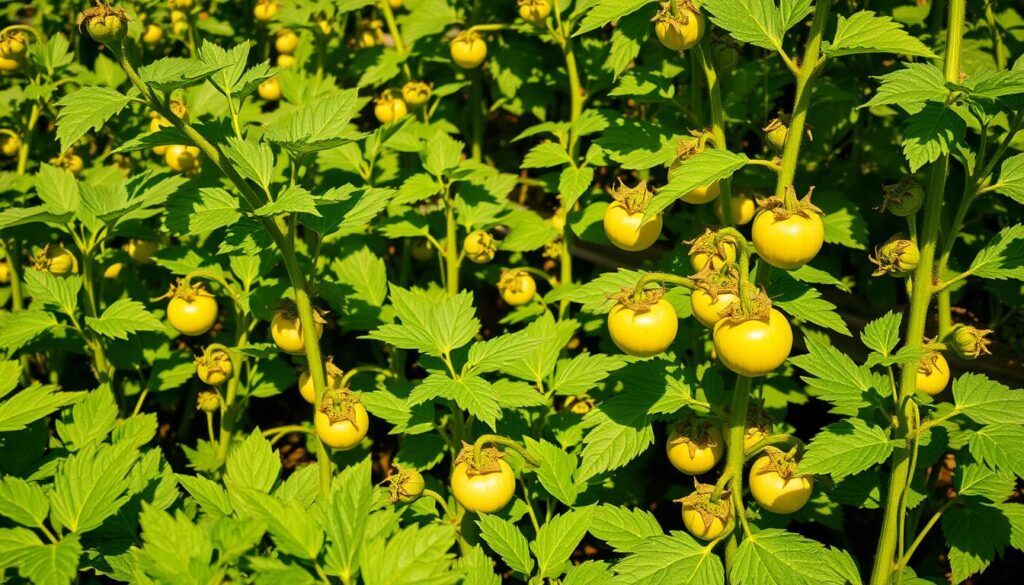
Seasonal Considerations for Companion Plants
When embarking on your gardening journey, seasonal considerations for tomatillos play a crucial role in achieving a bountiful harvest. Understanding the right timing for planting and adjusting your garden layout can help optimize growth and ensure the health of your tomatillos and their companions.
Spring Planting Tips
Spring is the perfect time to plant tomatillos. They thrive in warm weather, so it’s essential to wait until after the last frost. Consider starting your tomatillo seeds indoors in pots several weeks before the frost date to give them a head start. Transplant them outdoors when soil temperatures consistently reach 60°F. Pairing your tomatillos with robust companions, such as basil or beans, can enhance productivity. For effective growth, ensure adequate spacing to minimize competition among plants.
Summer Companion Adjustments
As temperatures rise, you might need to adapt your planting strategies. During summer, consider introducing herbs or flowers that flourish in the heat, such as marigolds or oregano. These additions can offer shade and are effective at attracting beneficial insects that aid in pollination and pest control. Monitor the conditions closely, and be ready to modify your care routines, like adjusting watering frequency, to meet the demands of your thriving garden.

| Season | Activity | Notes |
|---|---|---|
| Spring | Plant tomatillos and companions | Wait until after the last frost; suitable companions include basil and beans |
| Summer | Adjust companion planting | Introduce heat-tolerant plants like marigolds; monitor watering |
Planning Your Companion Planting Garden
When embarking on the journey of planning your tomatillo garden, a detailed approach will lead to greater success. Developing a companion planting layout is vital for ensuring that every plant thrives together. A well-thought-out layout can help you visualize where each companion plant fits, optimizing growth and cooperation among varieties.
Creating a Layout Plan
Start by sketching a rough layout of your garden. Consider the height and spread of each plant, ensuring none will overshadow the tomatillos. Placing taller plants to the north side can help maintain sun exposure for the rest. Use companion planting principles to pair tomatillos with plants that enhance growth and deter pests. Think about spacing requirements to avoid overcrowding, allowing air movement and sunlight access.
Using Garden Maps
Garden maps serve as an effective way to organize your planting strategy. Mark where each companion plant will go, noting growth stages and times. Mapping can assist in understanding the relationship between tomatillos and their partners, as well as in tracking rotation for future planting seasons. By recording successful arrangements, you improve your chances in subsequent seasons of planning a productive tomatillo garden.
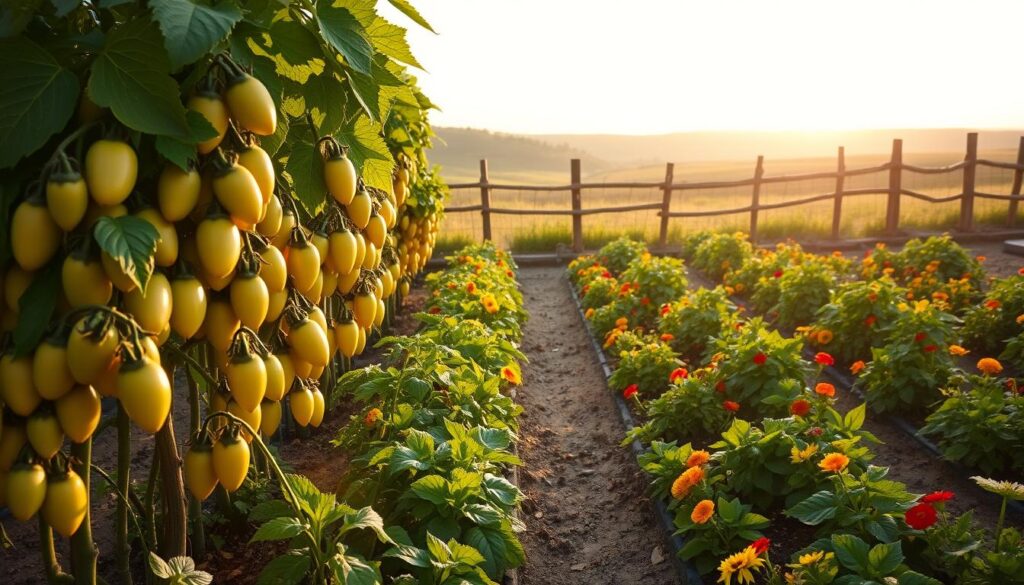
Additional Plants That Pair Well with Tomatillos
In your quest for optimal tomatillo growth, you might consider integrating additional tomatillo companions into your garden. These plants not only enhance the overall health of your garden but also contribute to a vibrant atmosphere.
Marigolds
Marigolds are an excellent choice when looking for plants that complement tomatillos. Their strong scent effectively repels pests, while their bright blooms add a splash of color to your garden. By attracting beneficial insects, marigolds help maintain a healthier ecosystem around your tomatillos, promoting better growth.
Oregano
Oregano serves as another superb companion for tomatillos. This herb is known for its strong pest-repelling properties, which protect your tomatillos from unwanted insects. Additionally, oregano can enhance soil health, contributing to a more robust growing environment for your tomatillos. This ultimately leads to improved flavor and yield.
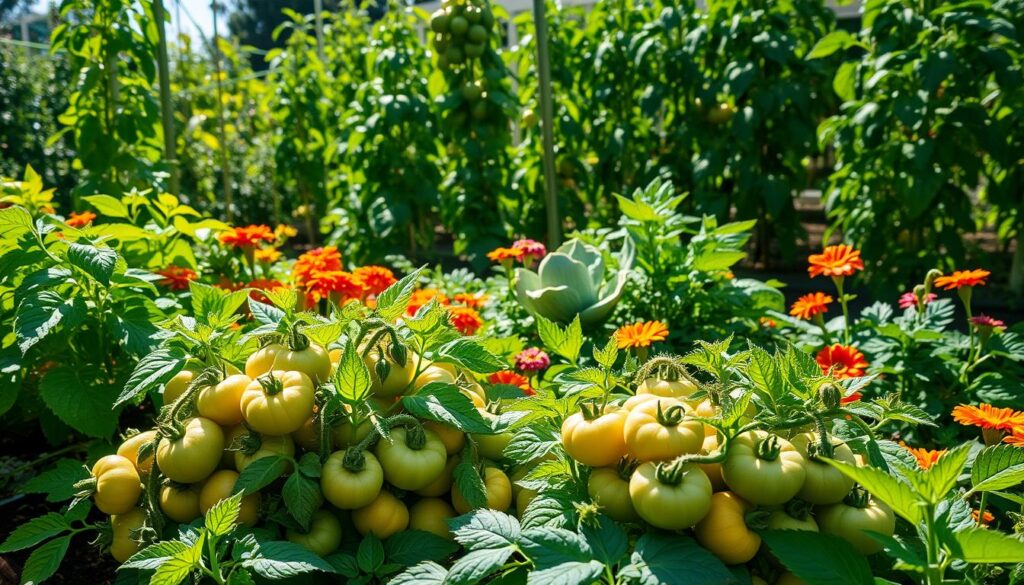
Tips for Maintaining Your Companion Garden
Creating a thriving companion garden requires ongoing attention to watering and fertilization practices. With proper maintenance for companion gardens, you can foster healthier tomatillos and their companion plants. Applying consistent care transforms your gardening experience into a productive endeavor.
Regular Watering Practices
Establishing effective watering routines is crucial. Tomatillos benefit from receiving between 1 to 1.5 inches of water weekly. Adjust this based on rainfall and temperature. Monitor soil moisture by sticking your finger about an inch into the soil. If it feels dry, it’s time to water. Consider using soaker hoses or drip irrigation for more efficient moisture distribution.
Fertilizing with Companions
Regularly fertilizing tomatillos enhances plant growth and overall yield. Opt for a continuous-release fertilizer that nourishes both tomatillos and their companion plants. This practice promotes strong root systems and helps fend off pests. A well-fertilized garden leads to bountiful harvests and vibrant plant life.
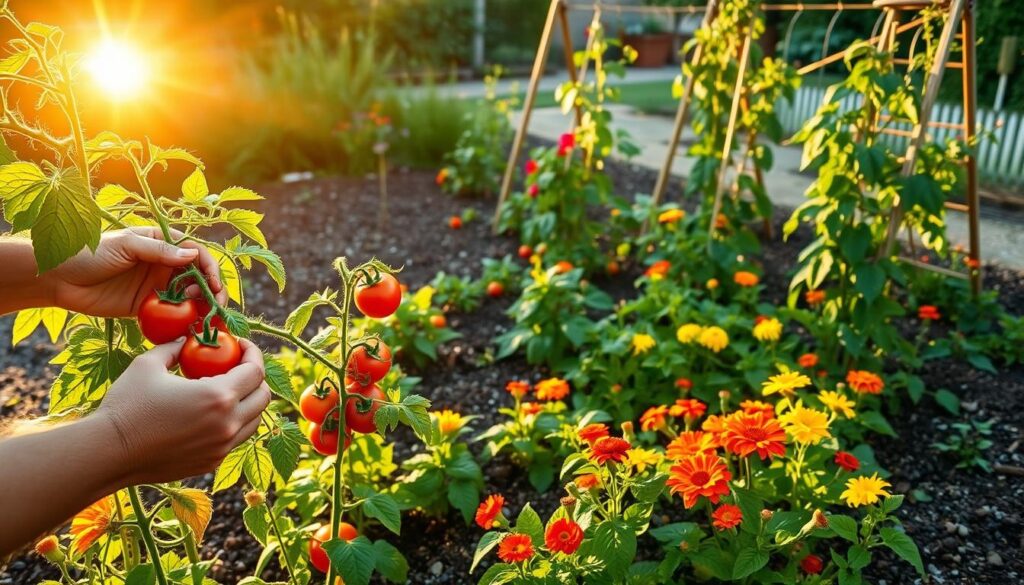
Recognizing Signs of Companion Plant Success
When you engage in companion planting with tomatillos, it’s essential to monitor key indicators that demonstrate your garden’s health and productivity. Recognizing plant health includes assessing growth patterns and pest management effectiveness. Noticing vibrant foliage and strong root systems often reflects signs of successful tomatillo companions.
Lush Growth Indicators
One of the primary signs of successful tomatillo companions is the lush growth of plants involved in the partnership. This can manifest as:
- Vibrant green leaves, which signify good nutrient uptake.
- Robust stem structures, indicating strong support for fruit production.
- Healthy root development, crucial for nutrient and moisture absorption.
Pest Reduction Signs
Effective companion planting can lead to reduced pest presence, showcasing another clear sign of success. Look for:
- Fewer yellowing leaves, which can indicate less stress from pests.
- Minimal physical damage to both tomatillos and their companions.
- Increased beneficial insect activity, as various plants attract pest predators.
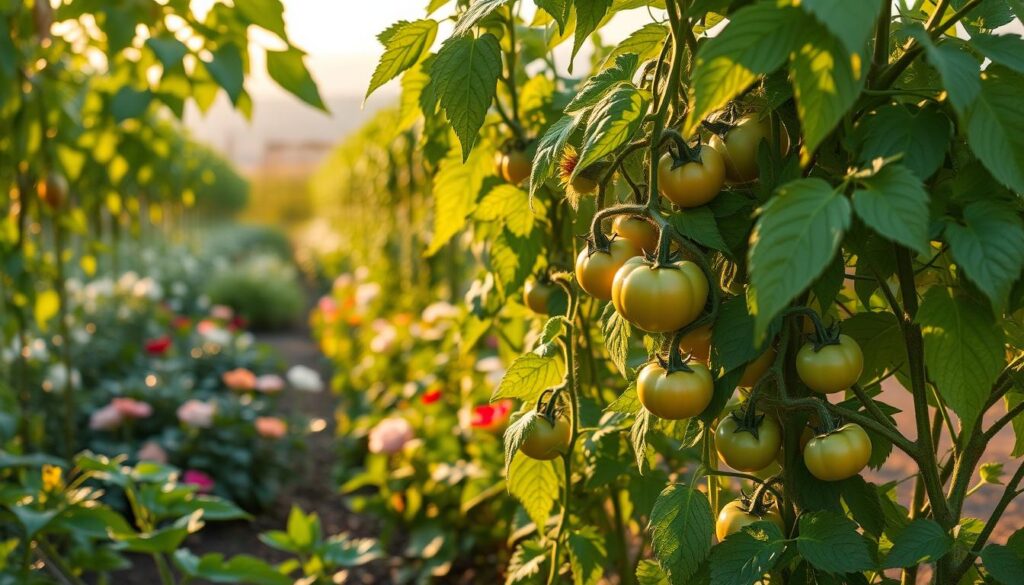
Troubleshooting Common Companion Plant Issues
Maintaining a successful garden involves troubleshooting companion plants when issues arise. Early identification of problems, such as pest infestations or nutrient deficiencies, is crucial in addressing common garden problems effectively. Acting promptly can save your plants and ensure healthy growth.
Identifying Problems
First, observe your plants closely. Look for signs such as yellowing leaves, stunted growth, or pest activity. Common indicators can include:
- Leaf discoloration or wilting
- Presence of pests like aphids or whiteflies
- Unusual growth patterns
Solutions to Common Issues
Once you’ve identified a problem, there are several strategies you can implement. Consider these solutions:
- Adjust watering schedules to ensure soil isn’t too wet or too dry.
- Improve soil fertility by incorporating organic compost.
- Rearrange plant layouts to enhance light exposure.
These actions help in troubleshooting companion plants and resolving various common garden problems. Proactive measures can lead to thriving tomatillos alongside their companions.

Harvesting and Utilizing Your Tomatillo Crop
Once your tomatillos are ready, knowing the right methods for harvesting tomatillos can enhance the overall experience of enjoying your crop. These unique fruits will have firm textures and should fill their husks, generally appearing ready around two to three weeks after blooming. Timing ensures that you will reap the best flavors and texture.
Proper Harvesting Techniques
To ensure a successful harvest, gently twist or pull the tomatillo off its stem. If you’re hesitant, using scissors can provide a cleaner cut. Always wear gloves, as the sticky sap can be irritating to the skin. After harvesting, handle your tomatillos with care to prevent bruising.
Culinary Uses for Tomatillos
Tomatillos boast a flavor profile that makes them ideal for a variety of dishes. Their tartness is a hallmark in traditional cuisines, especially within authentic Mexican cooking. Popularly, they are the main ingredient in salsa verde, a zesty condiment that pairs well with tacos and grilled meats. You can also incorporate them into stews, soups, or even roasted as a side dish for an added depth of flavor.
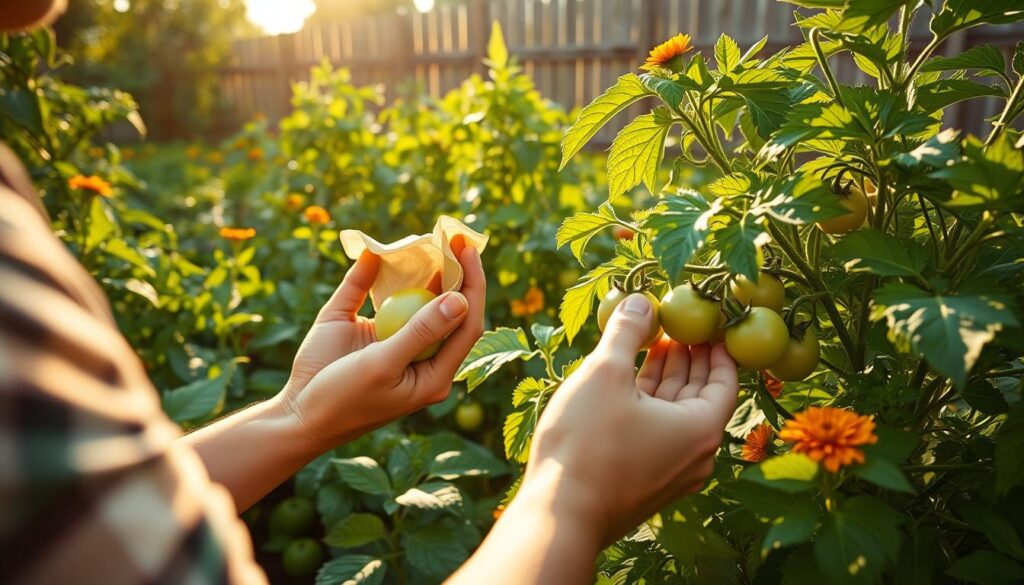
Conclusion: Maximize Your Garden’s Potential
As you explore the world of tomatillo companion plants, it’s clear that the benefits of companion plants extend far beyond basic gardening techniques. By nurturing plant partnerships, you can enhance growth, manage pests more effectively, and even elevate the aesthetic appeal of your garden. Embracing these natural alliances truly allows you to maximize your garden potential.
Reflecting on the key benefits, such as increased nutrient sharing and improved resilience against pests, it’s evident that incorporating companion planting can transform your gardening experience. You may find it rewarding to experiment with various plant combinations, as each unique pairing can lead to delightful surprises in your garden.
So, take the plunge! Venture into the realm of companion planting to optimize your garden’s potential. With a bit of creativity and knowledge, your tomatillos—and your entire garden—can flourish, creating a vibrant ecosystem that benefits both your plants and your culinary endeavors.









